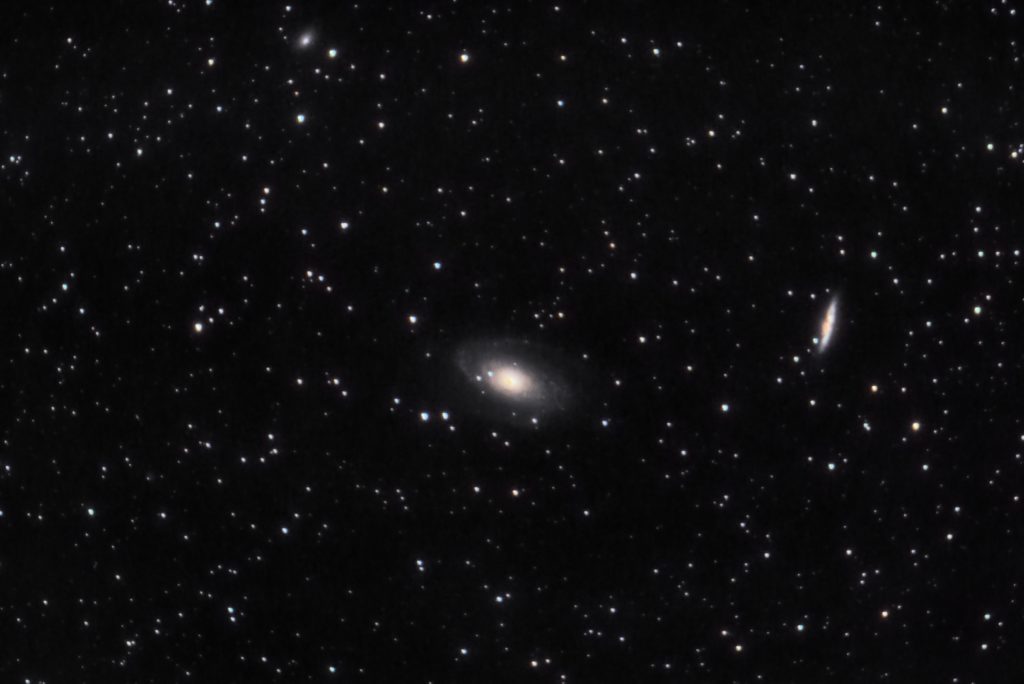By some lucky coincidence, the skies have been clear for two nights in a row since my new telescope arrived. As it got to dusk I set up my mount, scope and laptop on the deck knowing I’d be able to see Polaris and Bode’s galaxy from there. Seeing as this was my first time using my new scope with my new mount to astro-image, it took me a little while to get everything assembled, connected, aligned, focused and taking pictures. The end result came out very nice for my first attempt, even with the light pollution here in the suburbs.
Centered in the finished image you can see M81, known as Bode’s galaxy, with M82, the Cigar galaxy, off to the right. You can also see NGC 3077 near the top and a little to the left of center. All three are about 12 million light years away and are in the Ursa Major constellation.
You can clearly see M81’s arms in my image although with more exposure time and from a darker site the galaxy would appear to be about twice as big. If you look closely you can also see wisps of red near the M82’s core which is caused by ionized hydrogen gas jetting out from the galaxy.
Astrophotography is a lot of fun but quite challenging. Acquiring the images is only the first step and the image processing can take more time than capturing the pictures.
To get this photo I took 38 photos, each a 45 second exposure at 800 ISO, which are called lights. I then took 125 additional calibration photos, some with the lens cap on, some with a t-shirt over the end of the telescope, which are used in image processing to resolve hot pixels, dust on the lenses, sensor noise and other issues. Once I get my guidescope and autoguider set up up I should be able to get a little sharper image as well.
I used a program called Deep Sky Stacker to combine all these images into a single image, automatically picking the best ones, aligning them, and then using the calibration frames to correct for the different issues. Next I pulled this image into a program called StarTools which allows you to do all kinds of image processing to create a really nice looking picture.
